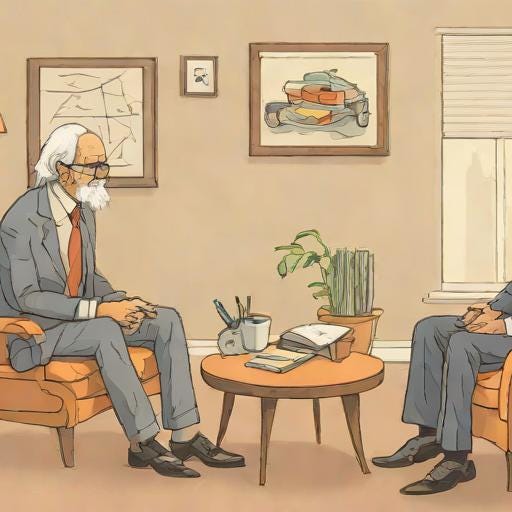A Rising Tide of Anxiety: Understanding America's Growing Unease
Exploring the Factors Behind America's Escalating Emotional Struggles
The American Psychiatric Association's 2024 report offers insight into the increasing levels of anxiety among Americans. The surveys show that 43% of U.S. adults feel more anxious than last year. The increase in anxiety has steadily grown, compared to 37% in 2023 and 32% in 2022.
This surge in anxiety begs a closer examination of what's driving it. Anxiety, which depends always on how someone reacts to perceived threats, is closely linked to a person's environment. Much has been adding to this sense of fear in today's world.
Another enormous source of stress is economic uncertainty. But with inflation rising, housing costs ever higher, and job security wavering, financial stability seems increasingly beyond reach. Even the employed and the savers worry about their future and their children's fate.
On a world level, continuing wars, conflicts, and geopolitical tensions, including those in Ukraine and Israel, occupy people's minds. The risk of terrorism and the humanitarian crises that inevitably result from such wars compound the sorrow.
Closer to home, surging crime rates have left many communities feeling less safe. This fear is not just about physical safety but also a lost sense of confidence about their neighborhoods.
Anxiety and fear are often confused, but they are distinct emotional experiences. Fear is an immediate response to a specific, identifiable threat, triggering the body's fight-or-flight reaction. For example, encountering a snake may evoke fear that quickly subsides once the danger is gone.
In comparison, anxiety is more chronic and scattered. It often stems from worries about uncertain future events. Unlike fear, which is tied to a specific situation, anxiety can linger over time, causing distress about various life aspects, such as work or health.
The other is the total information technology predicament. Social media sites and the 24/7 news cycle provide an unending stream of alarming, distressing content. Though staying informed is valuable, this constant stream of negative news contributes to a sense of helplessness and worry.
Anticipating these triggers is the first step toward combating the anxiety epidemic. Some factors, like global conflicts, are outside an individual's control. Still, other factors, such as access to mental health care and improving community safety, are within most Americans' ability to use.
It helps society help individuals become more resilient. The first step is recognizing that anxiety is a natural response to the challenges of recent months, but so is striving to create hope and stability for the future.
The APA also points to particular issues concerning Americans:
Keeping their families safe (68%)
Keeping their identity hidden (63%)
Health concerns (63%)
Bills and other expenses (63%)
The opioid epidemic (50%)
The increasing effects of emerging technology (46%)





